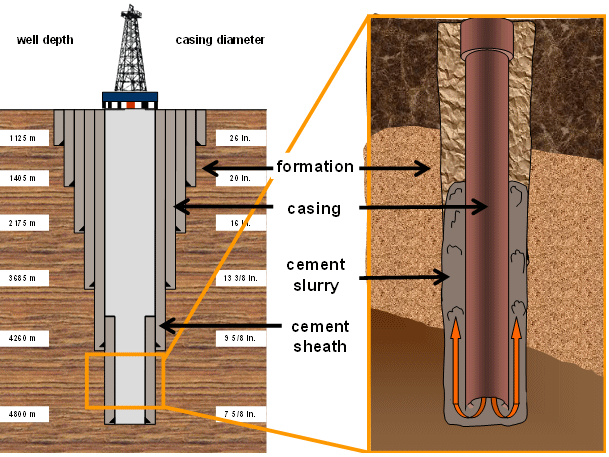Dewitt County lies at about forty-five miles from Copano Bay, on the Gulf Coast Plain in southeastern Texas. Cuero is its county seat and its largest town. Named after Green DeWitt, an empresario, the county comprises 910 sq. mi. and is bounded by the counties of Victoria, Goliad, Karnes, Gonzales, and Lavaca.
For the past two decades, oil wells in Dewitt County were not much productive until the oil boom which began in 2010. Since its production history, 5,086 wells have been drilled. Dewitt County has produced 4,736,344 barrels of oil as of August 2014 – the highest recorded yet – and is showing a lot of promise. So far, there are 774 producing leases and 62 producing operators. Burlington Resources O & G Co. LP, Chesapeake Operating Inc., Devon Energy Production Co. LP, and Sabine Oil & Gas LLC are some of Dewitt County’s top producing operators.
Top Leases in Dewitt County, TX:
- Burlington Resources O & G Co LP
- Chesapeake Operating, Inc.
- Devon Energy Production Co, L.P.
- Encana Oil & Gas(USA) Inc.
- EOG Resources, Inc.
- Geosouthern Energy Corporation
- Magnum Producing, LP
- Marathon Oil Ef LLC
- Matador Production Company
- Pioneer Natural Res. USA, Inc.
- Remora Management, LLC
- Rosetta Resources Operating LP
- Sabine Oil & Gas LLC
- Statoil Texas Onshore Prop LLC
| Operator Number | Operator Name | Location | Leases |
| 953562 | 1776 ENERGY OPERATORS, LLC | Houston, TX 77070 | 1 |
| 953637 | 1988 INDEXGEO JV | ||
| 953747 | 3-G OPERATING COMPANY | Houston, TX 77244 | |
| 403070 | 403070 – NAME UNKNOWN | ||
| 953762 | 5-D OPERATING INC | Yorktown, TX 78164 | |
| 000202 | A & D EXPLORATION COMPANY | Rockport, TX 78381 | 5 |
| 000253 | A.J.& M. OIL COMPANY | Flatonia, TX 78941 | |
| 000555 | A.O.E. OPERATORS, INC. | Fulshear, TX 77441 | |
| 000894 | ABACO OPERATING, LLC | San Antonio, TX 78209 | |
| 001690 | ABERCROMBIE-BIRDWELL | ||
| 003125 | ABRAXAS PETROLEUM CORPORATION | San Antonio, TX 78258 | 6 |
| 003645 | AC EXPLORATION, LLC | Houston, TX 77024 | |
| 003642 | AC PRODUCING, LLC | ||
| 003596 | ACOCK OPERATING LIMITED | San Antonio, TX 78217 | |
| 003599 | ACOCK/ANAQUA OPERATING CO., LP | Corpus Chrsti, TX 78401 | |
| 003673 | ACTIVA RESOURCES, LTD. | ||
| 003925 | ADA RESOURCES, INC. | ||
| 007320 | ADAMS, ROBERT L. | ||
| 008380 | ADOBE OIL & GAS CORP. | ||
| 008725 | AGOIL, INC. | Victoria, TX 77901 | |
| 010074 | ALAMO OPERATING COMPANY, L. C. | San Antonio, TX 78217 | |
| 011285 | ALCORN PROD CO. | ||
| 015050 | ALLTEX EXPLORATION, INC. | Houston, TX 77056 | |
| 015141 | ALPINE RESOURCES, INC. | ||
| 016945 | AMEND ENERGY COMPANY | ||
| 016980 | AMERADA HESS CORPORATION | ||
| 018008 | AMERICAN COMETRA, INC. | ||
| 018395 | AMERICAN INT’L ENERGY CORP. | ||
| 018900 | AMERICAN PETROFINA CO. OF TEX. | ||
| 018966 | AMERICAN PUMPING & TRUCKING | New Braunfels, TX 78131 | |
| 019365 | AMERICAN SHORELINE, INC. | Corpus Chrsti, TX 78401 | |
| 020463 | AMPAK OIL COMPANY | Plano, TX 75074 | |
| 020569 | ANAQUA OIL & GAS, INC. | ||
| 027200 | APACHE CORPORATION | Houston, TX 77056 | |
| 027815 | APPELL PET. CORP., ETAL | ||
| 028671 | ARANSAS DRLG & WORKOVER CO INC | Corpus Chrsti, TX 78409 | |
| 028801 | ARAXAS EXPLORATION, INC. | ||
| 028734 | ARCADIA OPERATING, LLC | Kilgore, TX 75663 | 6 |
| 028730 | ARCADIA REFINING CO. | ||
| 029340 | ARCO OIL & GAS CO. | ||
| 029390 | ARCTURUS OPERATING COMPANY | Dallas, TX 75254 | |
| 030790 | ARKLA EXPLORATION CO. | ||
| 033149 | ARRINGTON OIL&GAS OPERATING LLC | Midland, TX 79702 | 2 |
| 033148 | ARRINGTON,DAVID H. OIL & GAS,INC | Midland, TX 79702 | |
| 034380 | ASHFORD OIL & GAS COMPANY | ||
| 035633 | ATAPCO | ||
| 036103 | ATKINSON ENERGY CORPORATION | ||
| 036550 | ATLANTIC RICHFIELD CO. | ||
| 036562 | ATLANTIS OIL COMPANY, INC. | Tyler, TX 75701 | |
| 036742 | AUBURN ENTERPRISES, INC. |
References:
“Oil Wells and Production in Dawson County, TX.” Dawson County, TX Oil Wells, Operators, and Production Data. Texas Data Applications, LLC. Web. 1 Feb. 2015. <http://www.texas-drilling.com/dawson-county>.
Roell, Craig H. “DEWITT COUNTY.” Handbook of Texas Online. Texas State Historical Association, 12 June 2010. Web. 31 Jan. 2015. <http://www.tshaonline.org/handbook/online/articles/hcd07>.










